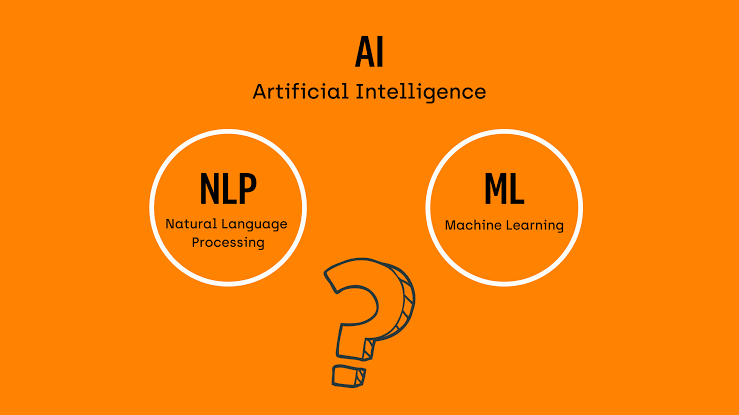Machine learning has redefined what is possible in natural language generation, particularly in the domains of text summarization and chatbots.
By June 2025, machine learning is still pushing the limits of artificial intelligence, especially when it comes to natural language generation. One important area of artificial intelligence is natural language generation (NLG), which is the automatic production of human-like text from structured or unstructured data that is coherent and contextually relevant. Text summarisation and chatbots are two important NLG applications that have attracted a lot of interest recently. In sectors like media, customer service, healthcare, finance, and education, both are essential in changing how people engage with digital content and intelligent systems.
Comprehending the Generation of Natural Language
Machines transform data into readable text through a process known as natural language generation. Although it is a subset of natural language processing (NLP), its primary focus is on language creation as opposed to interpretation. Large datasets are used to train machine learning models, especially those built on deep learning and neural networks, to produce responses, summaries, and narratives that resemble those of a human.
By 2025, transformer-based architectures—such as BERT-derived models and Generative Pre-trained Transformers (GPT)—will rule the field. These models have raised the bar for producing text that is accurate in terms of grammar, semantic relevance, and context. Recent developments in these technologies have improved the accuracy of text summarisation and increased the conversational intelligence of chatbots.
Text Summarisation and Its Expanding Function
The process of automatically distilling lengthy content into shorter versions while preserving the essential information is known as text summarisation. In today's information-rich world, where professionals, students, and casual readers all need to quickly understand content, this has become especially helpful. Extractive and abstractive are the two primary categories of text summarisation.
The process of extractive summarisation entails choosing and assembling the most crucial sentences from the original material. The more sophisticated and sophisticated process of abstractive summarisation, on the other hand, entails rephrasing and paraphrasing the material to create new, condensed versions that preserve the original meaning.
Abstractive summarisation has greatly improved with the aid of machine learning, particularly through large language models. To learn linguistic patterns and summarisation strategies, these models are trained on enormous corpora of research papers, news articles, and internet content.
These days, they provide excellent summaries that imitate human writing styles and can modify their length and tone based on the intended audience. There are many different uses for text summarisation. AI is being used in journalism by media organisations to produce event and breaking news summaries.
By condensing textbook chapters into their essential points, summarisation tools in education assist students in studying more efficiently. Executives in business use meeting transcripts and condensed reports to make snap decisions.
Intelligent Chatbots' Ascent
Compared to their earlier rule-based iterations, chatbots have undergone significant evolution. With the help of machine learning and natural language generation, modern chatbots can now comprehend intent, keep context throughout lengthy conversations, and provide insightful responses that closely resemble actual human interaction.
Chatbots are being used as first-line agents in customer service to answer commonly asked questions, solve basic problems, and point users in the direction of the right resources. This speeds up resolution times and lessens the workload on human agents. AI chatbots are being actively used by banks, telecom providers, e-commerce businesses, and government organisations in Nigeria and around the world to enhance the customer experience.
In addition to customer service, chatbots are being incorporated into personal productivity tools, virtual learning environments, mental health applications, and medical diagnostics. For example, chatbots can now gather patient symptoms, make appointments, and offer basic medical advice in the healthcare industry while adhering to data privacy laws.
These chatbots' effectiveness stems from their reliance on deep learning, which enables them to comprehend the subtleties of human language, such as idioms, emotions, and slang. In order to facilitate conversations in a variety of languages, dialects, and cultural contexts, transformer-based models such as GPT-4.5 and more recent multilingual models introduced in 2025 are made accessible to a wide range of demographics.
NLG and Reinforcement Learning Together
In 2025, incorporating reinforcement learning into NLG systems is a new trend. AI models can learn from feedback, whether from simulated environments or human users, and improve their outputs by using rewards or penalties thanks to reinforcement learning. This implies that, in the case of chatbots, the system improves over time by figuring out what kinds of responses result in greater user satisfaction.
Additionally, this method has improved text summarisation tools' performance. Machine learning models modify their weighting algorithms to generate outputs that are more succinct and contextually aware based on feedback regarding the readability and utility of summaries. This feedback loop guarantees that NLG systems keep developing and adjusting to practical applications.
Responsible Use and Ethical Issues
Machine learning for natural language generation has many benefits, but there are drawbacks as well. The possibility that content produced by AI will be deceptive, biassed, or harmful is among the most urgent worries. While chatbots can inadvertently reinforce stereotypes or false information if they are not properly trained, text summarisation systems may miss important context.
Developers and AI ethicists are striving to make NLG technologies transparent, comprehensible, and compliant with ethical standards by June 2025. This entails the use of human review in high-stakes applications, continuous bias detection, and meticulous dataset curation. To increase public confidence in AI-generated language tools, regulation and self-governance are becoming more and more crucial.
